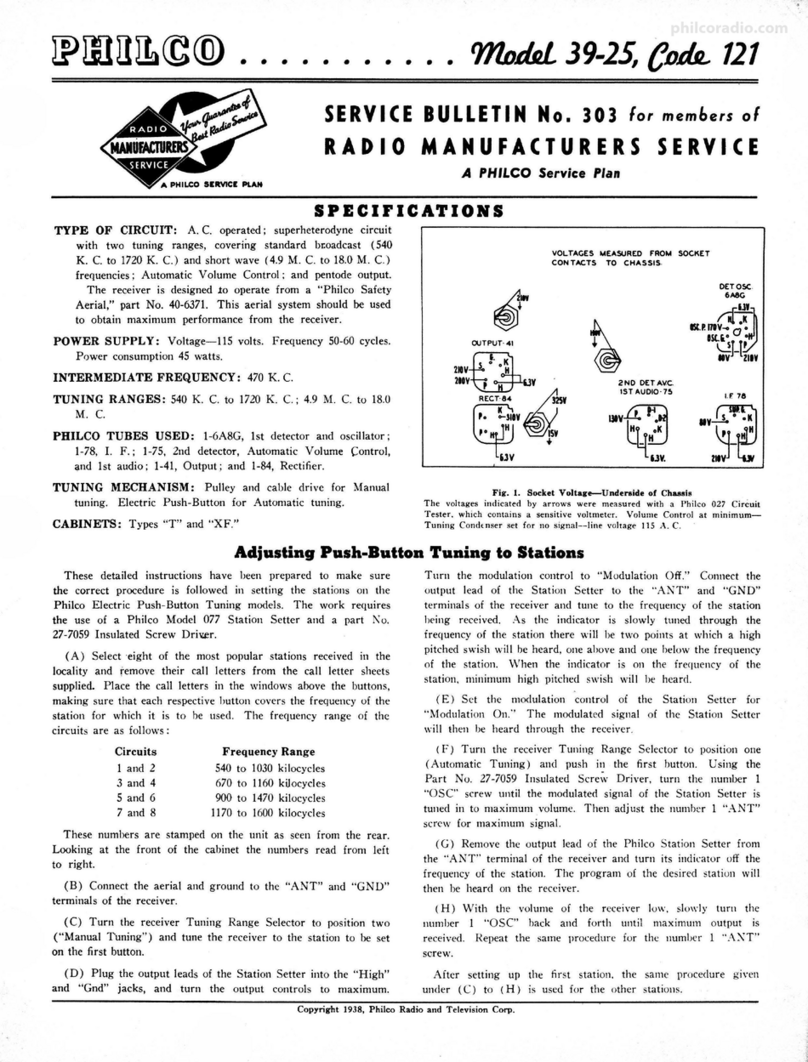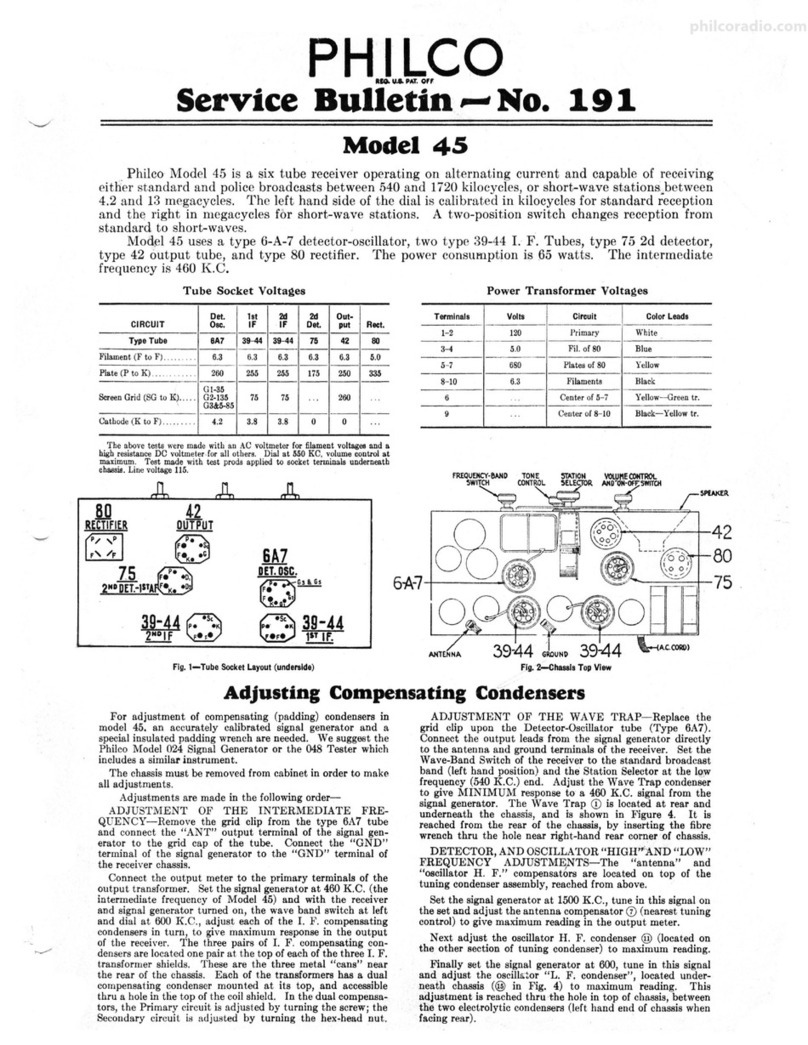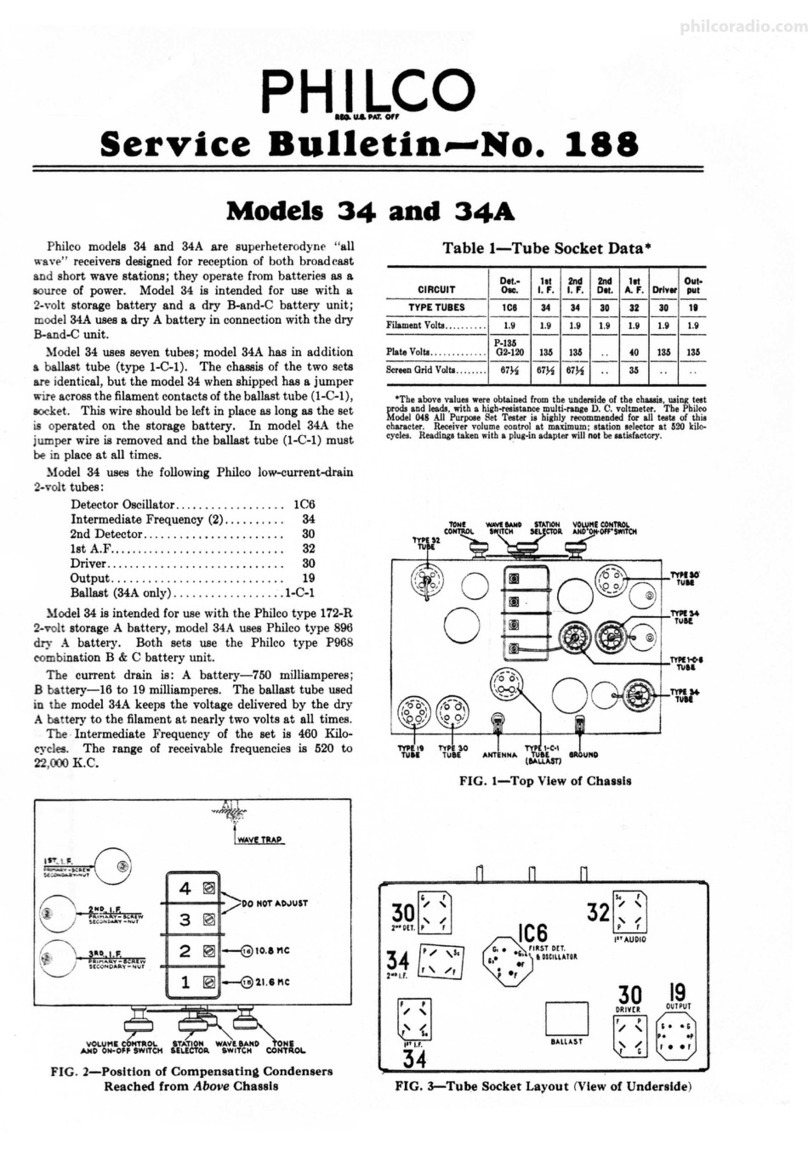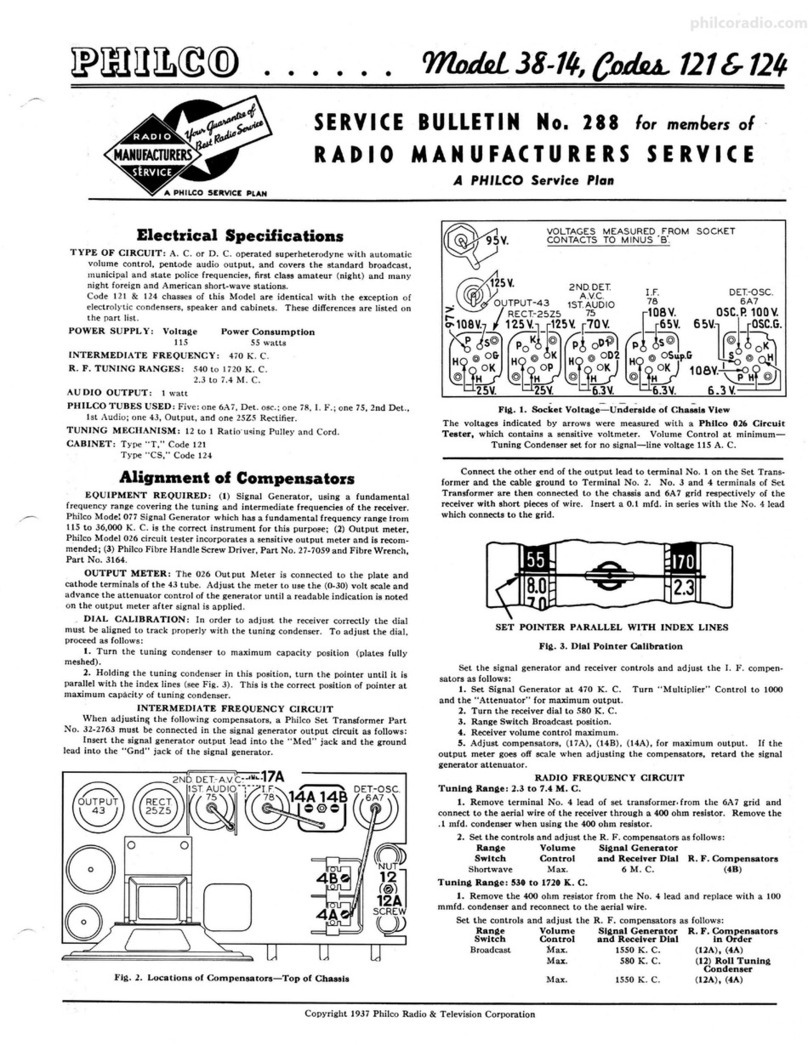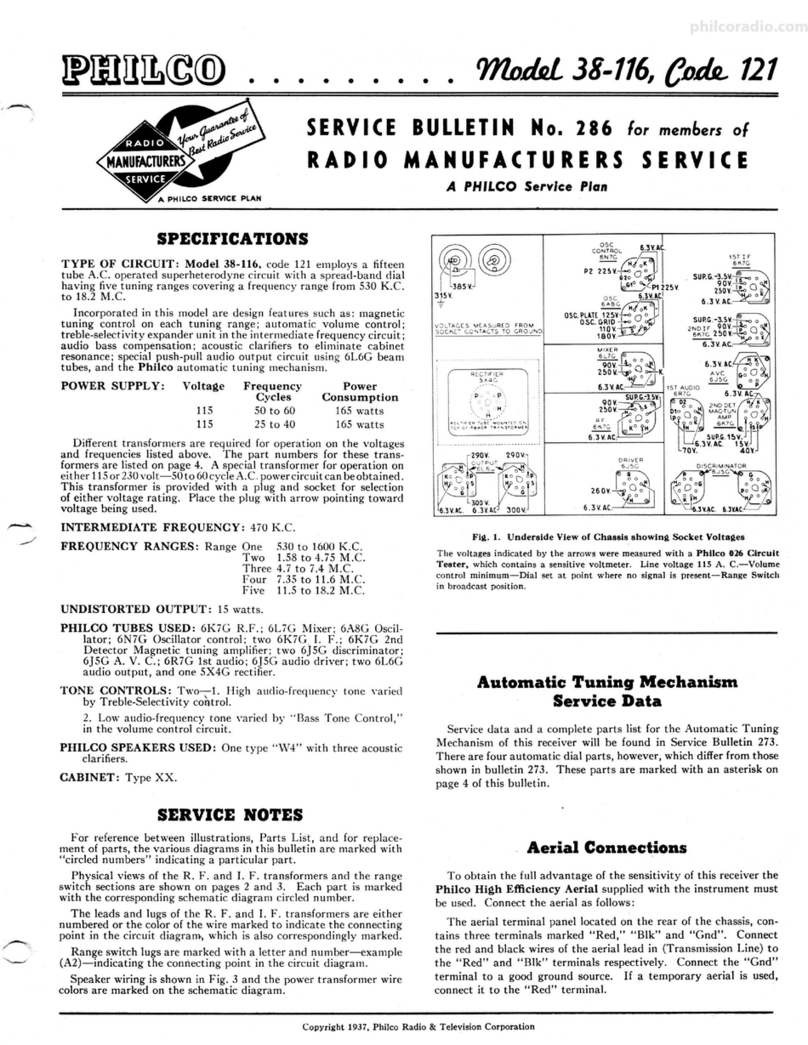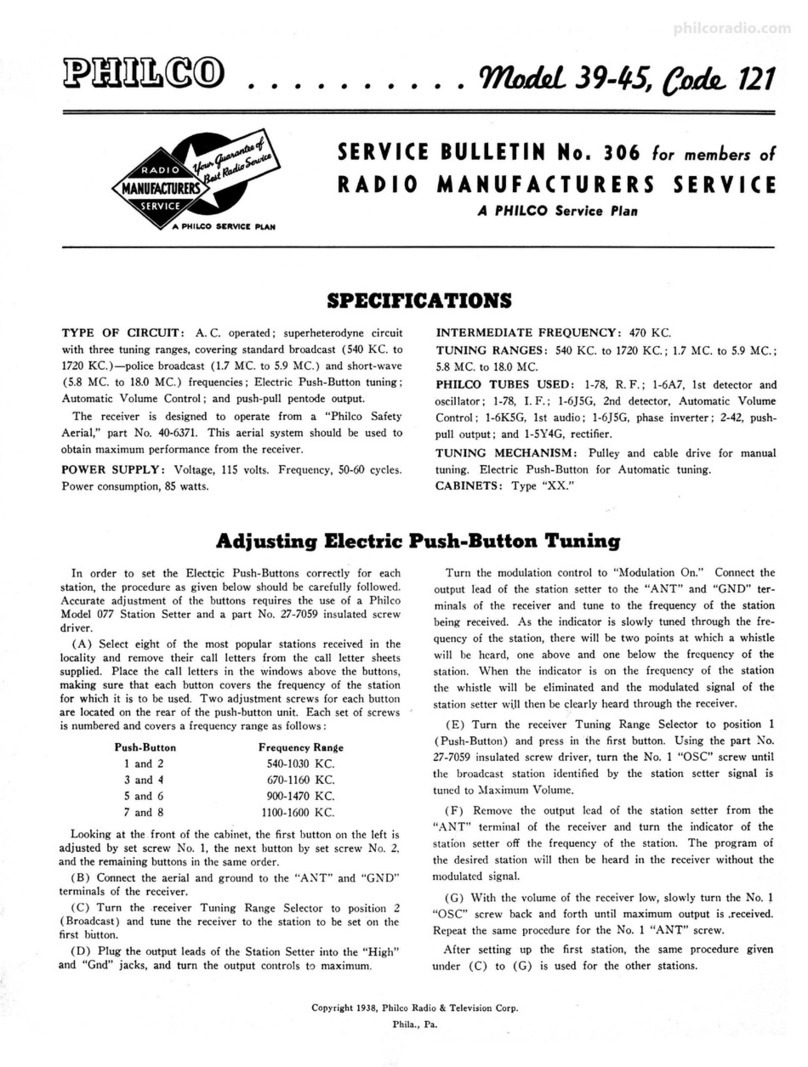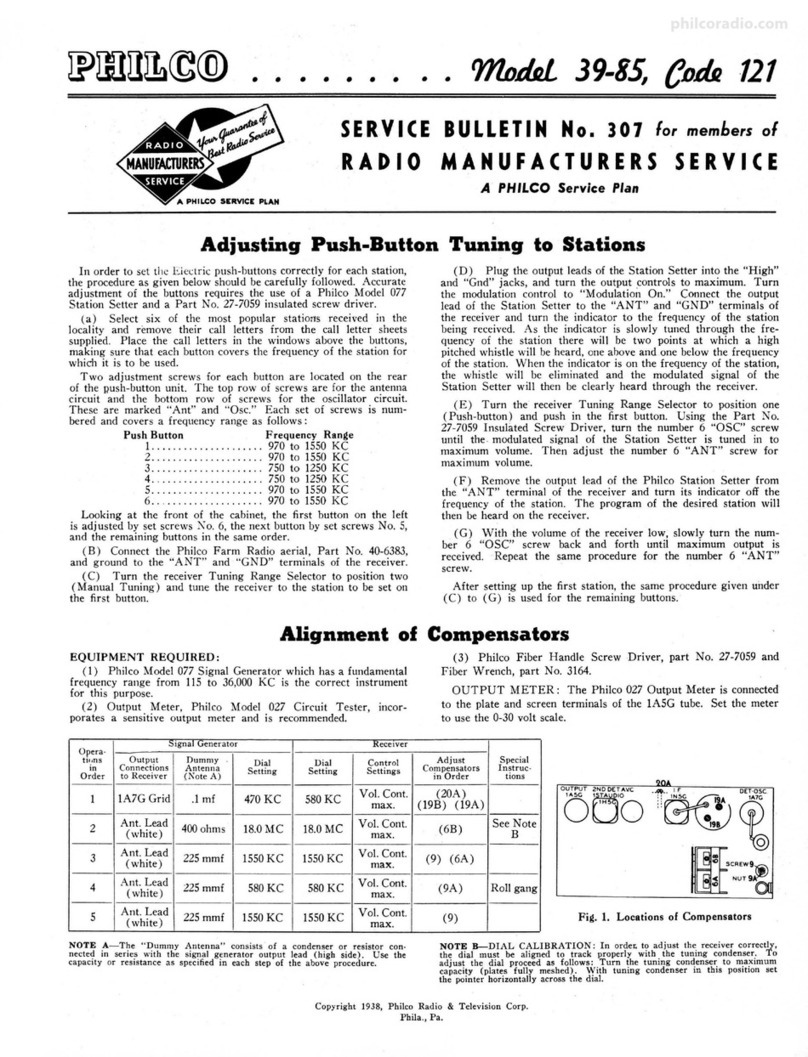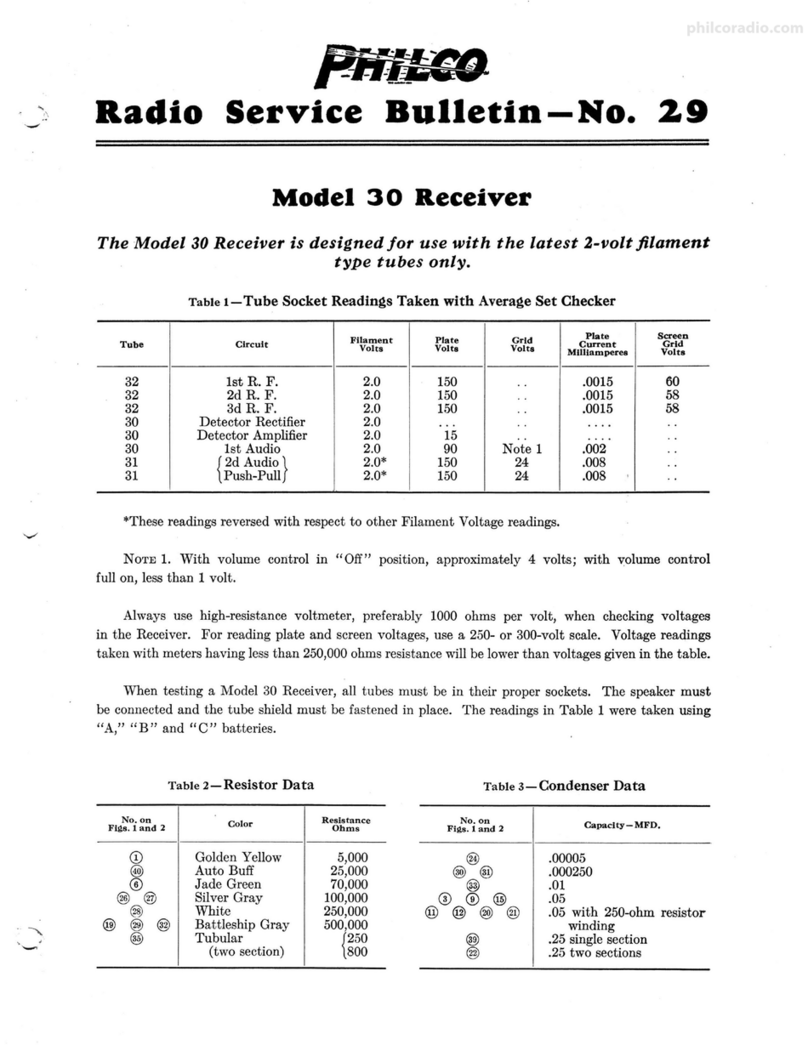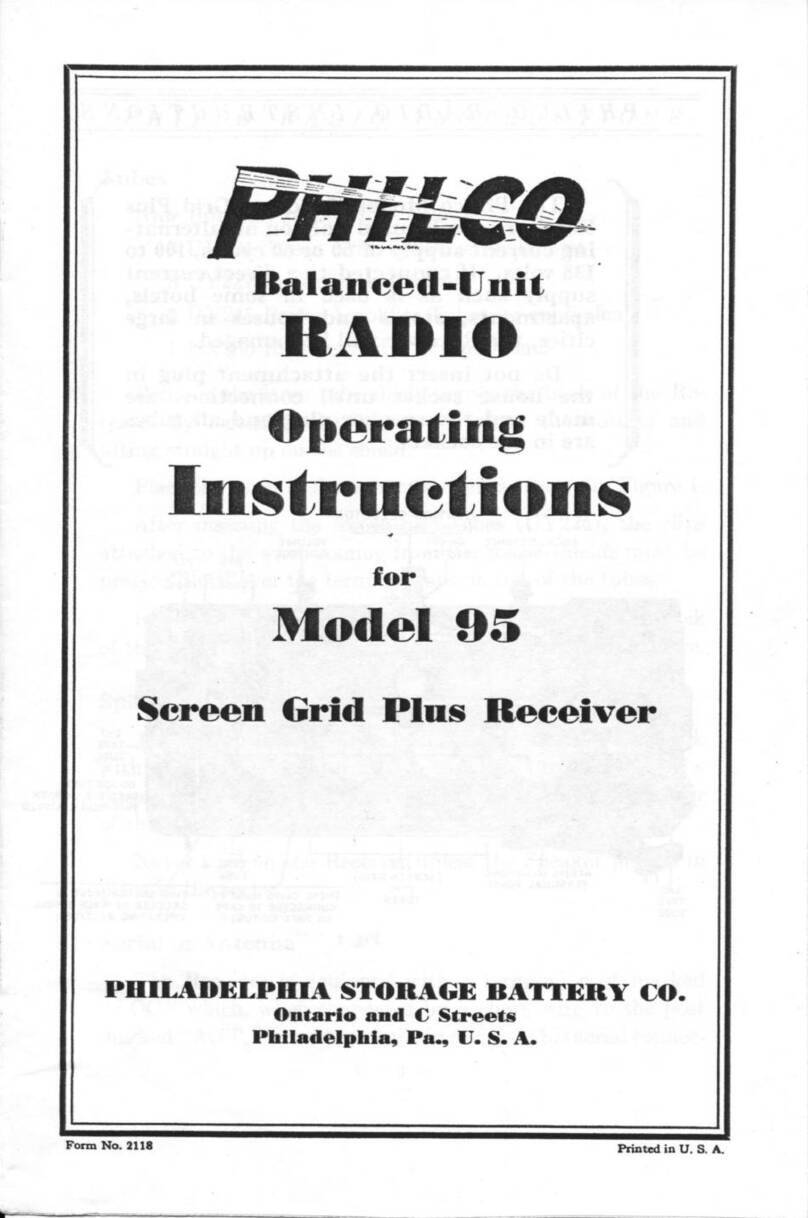
PHILCO RADIO 1,4/STRUCTIO,^rrS
Always regulate the volume by means of the "volume
control " and the " local-distance " switeh -never by detuning.
Undistorted reproduction will be obtained
up to the full output of the two 245 power
tubes as the volume control is turned up.
Turning the volume control further may
reduce rather than increase the volume or
even cut off the station so that nothing
will be heard. The volume control is de-
signed to operate in this way on strong
stations.
Standard Warranty
We wamant each new Radio Receiuer and Spealter nl,anxl-
factured by us to be free from defects in material and work-
manship under normal use and seruice, our obligation under
this warranty being limited to making good at our factory or
factory depots any part or parts thereof which shall, within
ninetE @0) daAs after deliuerg of such Receiuer to the original
purchaser, be returned to us with transportation charges pre-
paid, and which our eramination shall disclose to our satis-
faction to haue been thus defectiue; this warranty being erpressly
in lieu of all other wamanties erpressed or implied and of all
other obligations or liabilities on our part, and we neither
assunl,e nor authorize any representatiue or other person to
assun'te for us any other liability in connection with the sale of
our Receiuers or Speakers.
This wamanty shall not apply to anE Receiuer or Speaker
u'h.ich shall haue been repaired or altered outside of our factorg
or factory depots in any ua?J so as, in our judgment, to afrect
its stability or reliability, nor which has been subject to misuse,
negligence, or accident, nor uthich has had the serial number
altered, efaced, or remoued. Neither shall this u,arrantE applA
to any Receiuer or Speaker which has been connected otherwise
tltan in accordance uith th,e instru,ctions furnished by us.
We make no uarranty whateuer in respect to tubes, inasmuch
as they are usually uarranted bg their respectiue manufacturers.
PHILADELPHIA STORAGE BATTERY CO.
Ontario and C Streets
Philadelphia, Pa., U. S. A.
5
